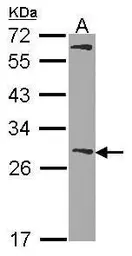GSTM1 antibody
Cat. No. GTX100298
Cat. No. GTX100298
-
HostRabbit
-
ClonalityPolyclonal
-
IsotypeIgG
-
ApplicationsWB IHC-P
-
ReactivityHuman

